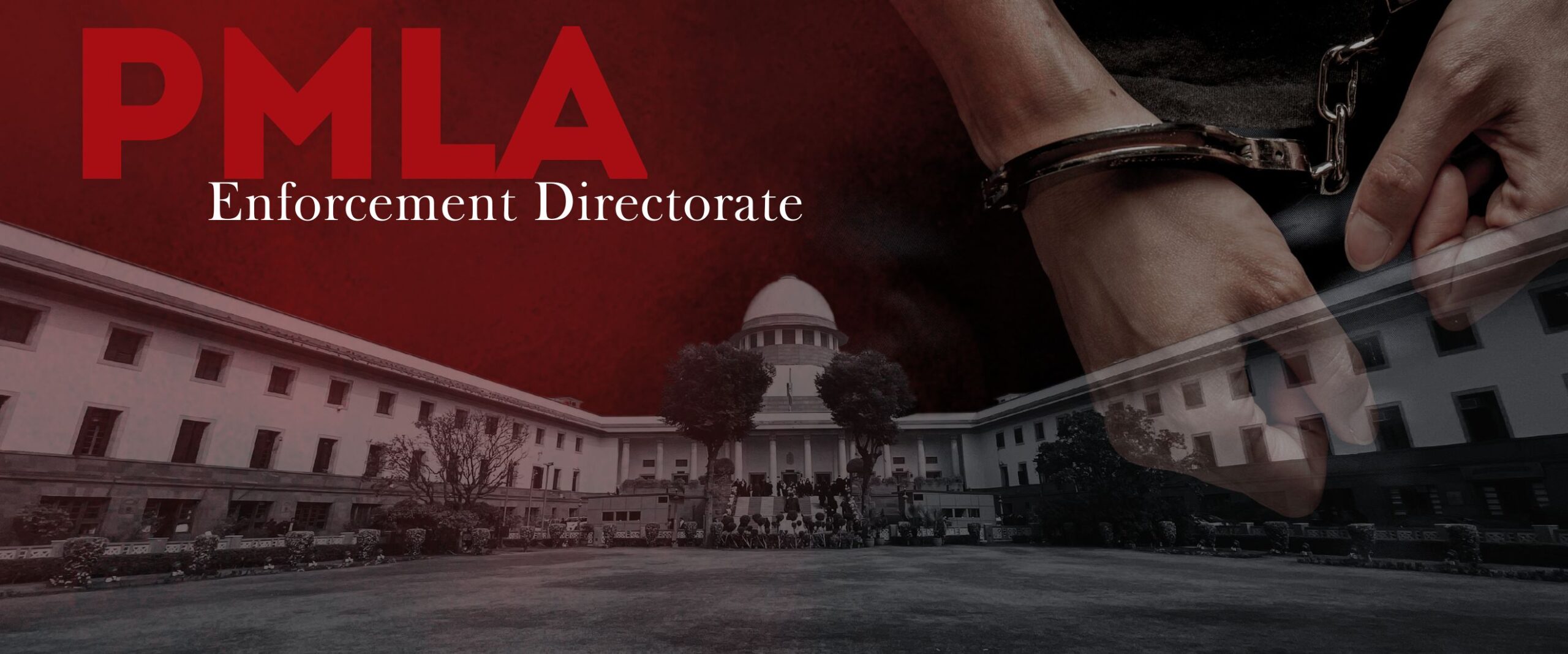Analysis
A narrow check on the ED’s wide powers
‘Tarsem Lal’ clarifies that the ED cannot arrest after cognisance, but experts warn against reading it as a shift from ‘Vijay Madanlal'

As a Court Reporter for the Supreme Court Observer, I spent much of early 2022 cooped up in Courtroom 3 at the Supreme Court, clutching a copy of the Prevention of Money Laundering Act, 2002 (PMLA). A three-judge Bench held court for over 20 days, as a battalion of venerable lawyers made Constitution-based arguments against the wide powers vested in the Enforcement Directorate (ED) by the PMLA. The challenge was spirited, but it was to no avail. When the Bench led by Justice A.M. Khanwilkar delivered judgement in Vijay Madanlal Choudhary v Union of India (2022), it upheld each and every provision that was challenged.
Justice Khanwilkar seemed rather satisfied on pronouncement day. On the eve of his retirement, he had managed to settle wide-ranging questions on an increasingly relevant legislation, and disposed of over a hundred petitions, some of which were nearly a decade-old. But Senior Advocate Kapil Sibal, who led the petitioners’ challenge, dejectedly said after hearing the judgement: “My experience tells me, milords, (such) matters are never concluded.”
Now, two years later, Justice Abhay S. Oka has penned the latest chapter in the Supreme Court’s PMLA jurisprudence. In Tarsem Lal v Directorate of Enforcement (2024), the Court has created the conditions for a small but potentially meaningful check on the ED’s powers.
No arrest after cognisance
In Tarsem Lal, Justices Oka and Ujjal Bhuyan have clarified that the ED has no power to arrest an individual after a Special Court dedicated to hearing PMLA cases has taken cognisance of the case. This judgement underlines that in criminal proceedings, custody is primarily meant to facilitate effective investigation—it is not meant to function as punishment for an undertrial.
On paper, at least, the logic has been clear. Special Courts generally take cognisance after the ED has filed its complaint, indicating that the investigation is complete and the case is ready for hearing. Investigative bodies arrest suspects during the investigation to aid the process of finding evidence. If an agency does not require custody during the investigation, why would it need to make an arrest after the investigation is concluded?
In Satendar Kumar Antil v Central Bureau of Investigation (2022), Justices S.K. Kaul and M.M. Sundresh clarified, in the context of routine criminal proceedings under the Code of Criminal Procedure, 1973 (CrPC), that the police would need to take permission from the court if it wished to arrest an individual for investigation after cognisance of their case had been taken. This judgement put an end to the practice of courts automatically sending accused persons into police custody upon taking cognisance.
Antil made it clear that courts must first issue summons, then a bailable warrant if the summons were not responded to, and finally a non-bailable warrant, if the accused continued to be absent in the proceedings.
The Antil judgement was meant to apply to agencies conducting criminal investigations. However, the ED, emboldened by Vijay Madanlal, refused to comply.
‘Bail under PMLA an extreme form of shadow boxing’
A key question confronting the Vijay Madanlal court was this—since the ED enjoys police powers of investigation, would it also be governed by the minimum procedural safeguards that applied to the police under the CrPC? Justice Khanwilkar’s unequivocal answer was that the PMLA is not a penal law. The judgement noted that the ED is a body created to conduct ‘inquiries’, not ‘criminal investigations’ as the police does. The effect: routine criminal procedure—and the safeguards built within it—would not apply in the context of arrest, search, attachment, seizure and questioning by the ED.
In the Tarsem Lal proceedings, the ED argued that Antil would not apply to it as the agency was not considered to be ‘police’. The agency took the position that it could automatically arrest suspects as soon as they responded to the summons issued by Special Courts.
The reason why arrest under the PMLA is a big deal is because the bail provision in the legislation reverses the burden of proof. If an accused who is arrested under the PMLA seeks bail, they face the high standard of proving their innocence before the trial begins. Back in 2022, Arshdeep Singh Khurana, a white-collar crime specialist, had told me: “It is practically impossible to get bail. People have been languishing in jail for more than two years without trial in many cases.” Advocate Avi Singh, also an expert on the PMLA, called bail under the legislation “an extreme form of shadow boxing,” where the accused must counter a case that the ED has often not finished building, with little to no access to the evidence against them.
Justices Oka and Bhuyan’s judgement in Tarsem Lal returns to fundamental criminal law principles to deal with the ED’s ‘not police’ argument. The point of issuing summons, the decision notes, is to ensure a person’s presence in court and not to take them into custody. The judgement also clarifies that even if an accused fails to appear in court after the issue of summons at the first instance and then the warrants, they need not apply for bail under the PMLA—they can apply for cancellation of warrants, a much simpler process under the CrPC.
Special courts’ discretion may render judgement otiose
Yet, when it comes to what judgements like Antil and Tarsem Lal mean in general practice, there’s many a slip between cup and lip. My conversations with PMLA experts suggest that even when the Supreme Court centres personal liberty and due process in its judgements, the ED can be difficult to rein in.
Singh recounted that right after Antil, he noticed that the police were making an increasing number of arrests before the courts could take cognisance of the normal criminal case. “The ED might do the same,” Singh suggested. He told me that the Supreme Court has an opportunity to allay some of these apprehensions in the reserved judgement in Arvind Kejriwal’s case, which has raised questions about the procedure governing the ED’s powers of arrest.
To ensure that the ED is not left without recourse if it needs custody for further investigation post-arrest, Tarsem Lal provides that the ED may apply to the Special Court. The problem posed by this, Singh said, is the ED’s habit of “filing one supplementary complaint after another” so that “the investigation is never truly over.”
Advocate Gautam Khazanchi, who practises white-collar law across courts in Delhi, said that neither the CrPC nor the PMLA lay down the factors that Special Courts must account for when dealing with the ED’s request for custody post-cognisance. Tarsem Lal also stops short of issuing any guidelines for the Special Courts in this situation. In the absence of any such provisions or guidelines, the Special Courts can exercise absolute discretion.
When I asked Khazanchi about the attitude of the Special Courts towards the rights of accused persons, he described them as “very negative, conservative.” Case in point: After an adjournment request in a bail proceeding last month, a Special Court Judge allegedly told a court staff, “Lene do datein, ED matters me kaunsi bail hoti hai” (“Let them take a date, it’s not like they are going to get bail in an ED matter.”) In the Delhi High Court, the accused relied on the probable bias evidenced by this comment to request a transfer. But the court denied it, stating that the context in which the comment was made cannot be ascertained.
As another instance, Khazanchi referred to the case of Jet Airways founder Naresh Goyal and his wife (since deceased). They were denied relief by the Special Court even as they were in dire need of medical treatment for cancer. Eventually, the Bombay High Court had to step in to grant them interim bail.
In the absence of any law or a higher court’s binding directions, Special Courts may be unlikely to stand in the way of the ED’s requests for custody post-cognisance, potentially rendering the Tarsem Lal judgement open to misuse.
Why is the judgement still significant?
Following Vijay Madanlal, the scope of the court to limit the powers of the ED are slim. However, while a review of Vijay Mandanlal remains pending, Tarsem Lal provides small but significant relief. And it is not the first or only decision since Vijay Madanlal to do so.
“Recently, a few judgments have attempted to work within the Vijay Madanlal frame, maybe not to rein (the ED) in, but to work some kind of accountability into the framework to make the ED prove their case,” said Singh. In Pankaj Bansal v Union of India (2023), Justices A.S. Bopanna and P.V. Sanjay Kumar had held that the ED cannot make arrests without providing the accused the grounds in writing. This put an end to the ED’s practice of only orally informing the accused of the grounds for arrest, or not all.
Coming from a court that has historically deferred to the executive in matters concerning special criminal laws generally, and the PMLA specifically, judgements like these stand out. For instance, Pankaj Bansal became the basis for the Supreme Court to extend relief on similar grounds to UAPA-accused Prabir Purkayastha, editor of Newsclick, earlier this month.
Cautioning that Tarsem Lal is an outlier in the Supreme Court’s PMLA jurisprudence, Khazanchi said that it is too soon to speak of any course-correction or a shift away from the Court’s Vijay Madanlal approach. Even so, he remains hopeful that Tarsem Lal will trickle down to subordinate courts and function as a small check on the extensive powers of the Enforcement Directorate.




